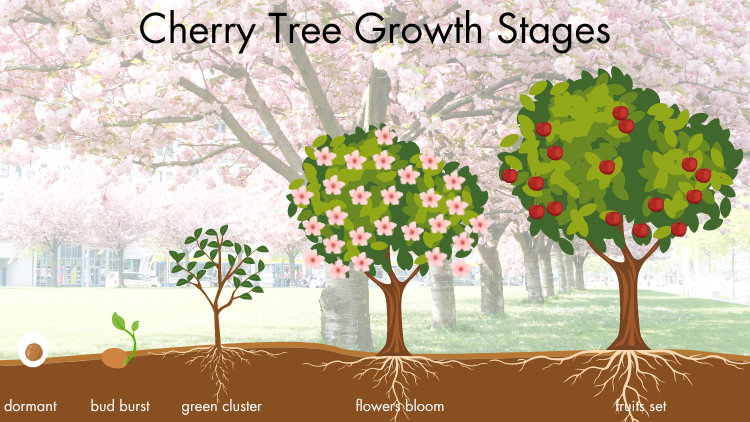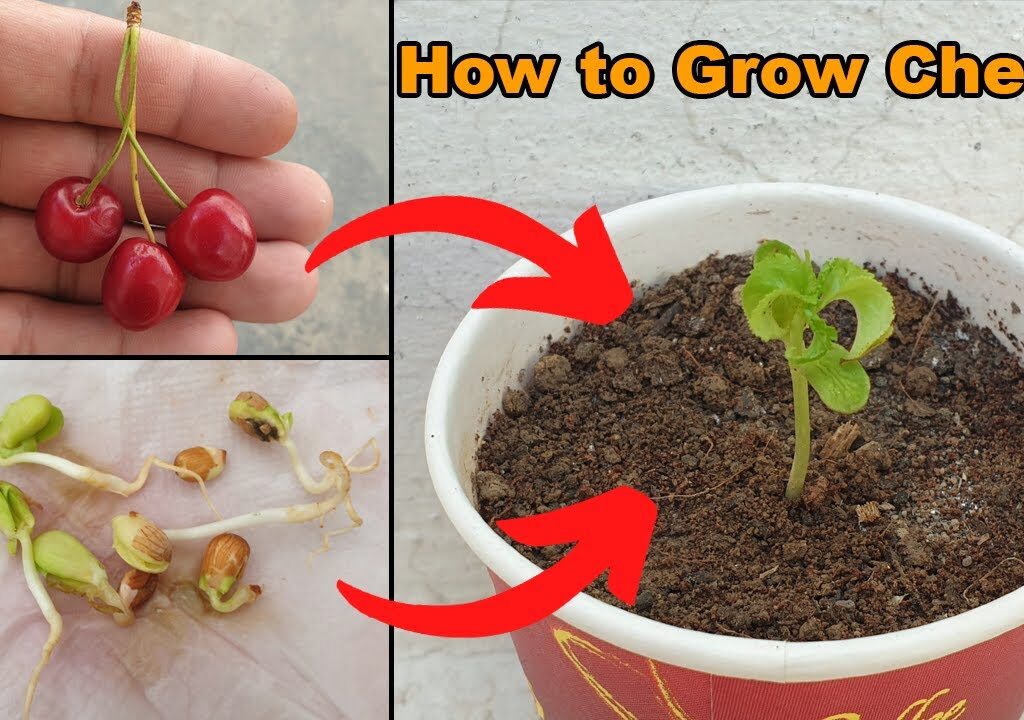How to Plant a Cherry Tree: A Comprehensive Guide
Introduction
Why Plant a Cherry Tree?
Planting a cherry tree is more than just adding a tree to your garden; it’s about enhancing your landscape with beauty and functionality. Cherry trees are known for their stunning spring blossoms and their ability to provide delicious fruit. Imagine the joy of picking fresh cherries straight from your own backyard!
Benefits of Growing Cherry Trees
Cherry trees offer numerous benefits. They improve air quality, provide shade, and attract pollinators like bees and butterflies. Plus, they add aesthetic value to your garden with their beautiful blooms and vibrant fruit.

Choosing the Right Cherry Tree
Sweet vs. Tart Cherry Trees
When choosing a cherry tree, you’ll encounter two main types: sweet and tart. Sweet cherry trees, like ‘Bing’ and ‘Rainier,’ produce large, juicy fruit ideal for eating fresh. Tart cherry trees, such as ‘Montmorency,’ are better for cooking and preserving.
Selecting the Right Variety for Your Climate
Different cherry varieties thrive in different climates. If you live in a warmer region, consider varieties that are heat-tolerant. For cooler climates, choose cold-hardy varieties. Always check with local nurseries or extension services for recommendations based on your specific location.
Preparing for Planting
Best Time to Plant Cherry Trees
The best time to plant a cherry tree is during the early spring or late fall. Planting during these times allows the tree to establish its roots before the more demanding summer or winter seasons.
Choosing the Ideal Location
Cherry trees need plenty of sunlight, so pick a spot that gets at least 6 to 8 hours of direct sunlight daily. Ensure the location has well-draining soil and enough space for the tree to grow to its full size.
Soil Preparation
Cherry trees prefer slightly acidic to neutral soil. Conduct a soil test to determine pH levels and amend the soil as needed. Incorporating organic materials such as compost enhances both the structure and fertility of the soil.
Planting Your Cherry Tree
Tools and Materials Needed
Gather the following tools: a shovel, garden fork, watering can or hose, mulch, and a tree stake. You’ll also need to have a soil amendment like compost ready.
Step-by-Step Planting Instructions
Dig a Hole: Dig a hole that is twice as wide and the same depth as the root ball of your cherry tree.
Prepare the Soil: Mix the excavated soil with compost or organic matter.
Position the tree at the end of the dug hole. Make sure it’s at the same depth it was in the nursery pot.
Fill the Hole: Backfill the hole with the amended soil, pressing down gently to eliminate air pockets.
Water Thoroughly: Water the tree thoroughly after planting to help settle the soil around the roots.
Watering After Planting
Watering is crucial after planting. Keep the soil evenly moist without making it soggy. Adding a mulch layer can assist in maintaining soil moisture and controlling temperature.
Caring for Your Cherry Tree
Watering Guidelines
Cherry trees require consistent watering, particularly in dry periods. Focus on providing deep, less frequent watering instead of frequent, shallow ones. This encourages deep root growth.
Fertilization
Feed your cherry tree with a balanced, slow-release fertilizer at the beginning of spring. Adhere to the directions provided by the manufacturer to prevent over-fertilization, which could damage the tree.
Pruning and Training
Prune your cherry tree to maintain its shape and remove any dead or diseased branches. Proper pruning also helps improve air circulation and sunlight penetration. Training the tree can guide its growth and increase fruit production.
Mulching
Add a 2 to 4-inch layer of mulch around the tree’s base, ensuring it is kept clear of the trunk. Mulch helps retain soil moisture, suppress weeds, and regulate soil temperature.
Protecting Your Cherry Tree
Common Pests and Diseases
Cherry trees can be susceptible to pests like aphids and diseases such as cherry leaf spot. Regularly inspect your tree and use appropriate treatments if needed. Consult with local extension services for advice on managing specific issues in your area.

Winter Care
In colder climates, protect your cherry tree during the winter months by mulching around the base and wrapping the trunk with burlap or tree wrap to prevent frost damage.
Harvesting Your Cherries
When to Harvest
Harvest cherries when they are fully ripe and have developed their full color. Sweet cherries should be firm and dark, while tart cherries are usually bright red or orange.
How to Harvest Properly
Gently twist the cherries off the stem to avoid damaging the tree. Use clean, dry hands or pruning shears for a clean cut.
Troubleshooting Common Issues
Yellowing Leaves
Yellowing leaves might signal issues such as excessive watering, inadequate drainage, or a lack of essential nutrients. Check your watering practices and soil conditions, and adjust as needed.
Poor Fruit Production
If your cherry tree isn’t producing much fruit, it could be due to inadequate pollination, improper pruning, or environmental stress. Ensure the tree is properly cared for and consider planting a pollinator variety if necessary.
Conclusion
Planting and caring for a cherry tree can be a fulfilling and enjoyable endeavor. With the right care, you’ll have a beautiful tree that produces delicious fruit for years to come. Remember to choose the right variety, prepare the soil properly, and keep an eye out for pests and diseases. Happy planting!
